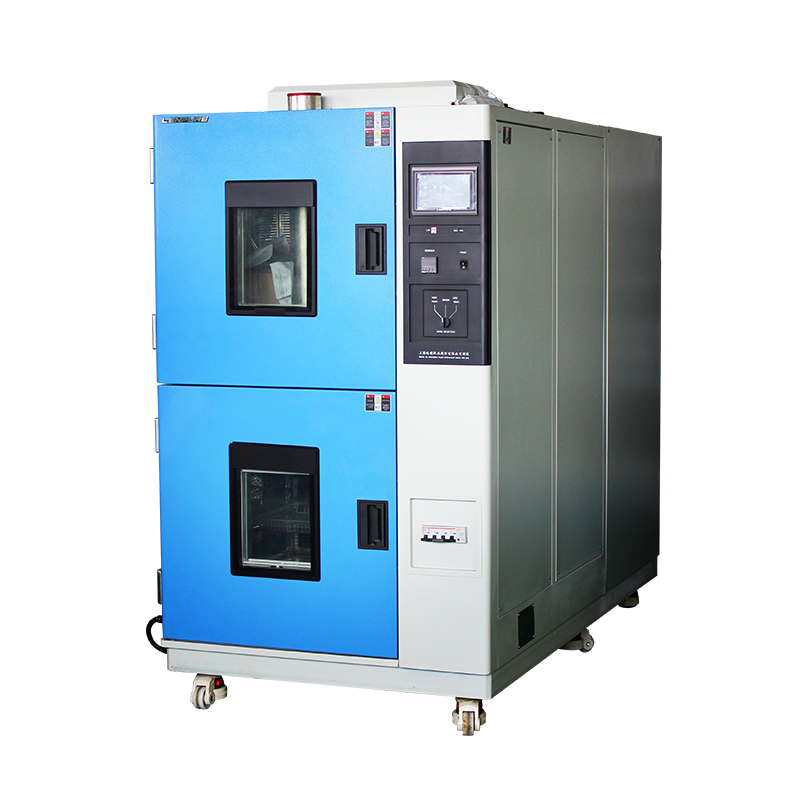

If the temperature recovery time falls outside the specified range, it can affect the test results of the thermal shock chamber. To routinely test the temperature recovery time of the equipment, you can follow the steps below.
Process for Testing Recovery Time:
Install the temperature measurement sensor at the designated position in the thermal shock chamber.
Adjust the temperature controls of the low-temperature chamber and high-temperature chamber to the required values.
Allow the chambers to achieve the desired heating and cooling temperatures.

Once the equipment enters the temperature control state, stabilize it for half an hour or according to the product technical requirements, and record the temperature at the measurement points.
Place the test load into the high-temperature chamber and select the appropriate holding time based on relevant standards and product technical conditions.
Set the equipment’s transition time and transfer the test load from the high-temperature chamber to the low-temperature chamber. Observe and record the temperature at the measurement points during this process.
Repeat the same method to transfer the test load from the low-temperature chamber back to the high-temperature chamber, while observing and recording the temperature at the measurement points.
After recording the two scenarios—transferring the test load from the high-temperature chamber to the low-temperature chamber and vice versa—measure the shortest time required for the temperature at the measurement points to return to the state before the test load was placed.
Linpin is a manufacturer of thermal shock chambers. For any questions regarding test equipment, you can consult our technical staff, who will provide tailored solutions based on your needs. The above outlines the main workflow for testing the temperature recovery time of the equipment. Through this explanation, we hope you have gained a deeper understanding of the relevant equipment. Thermal shock chambers are structurally divided into two-chamber and three-chamber types, and the workflow may vary slightly depending on the structure. For more information about the equipment, please visit our company website or call 400-066-2888 to inquire about the relevant parameters.